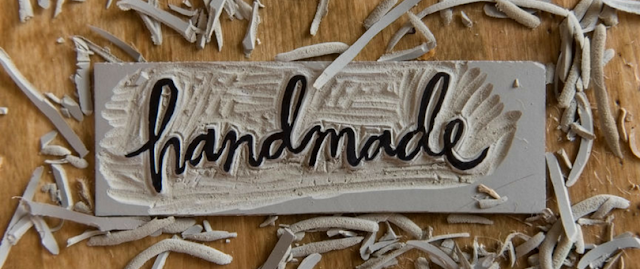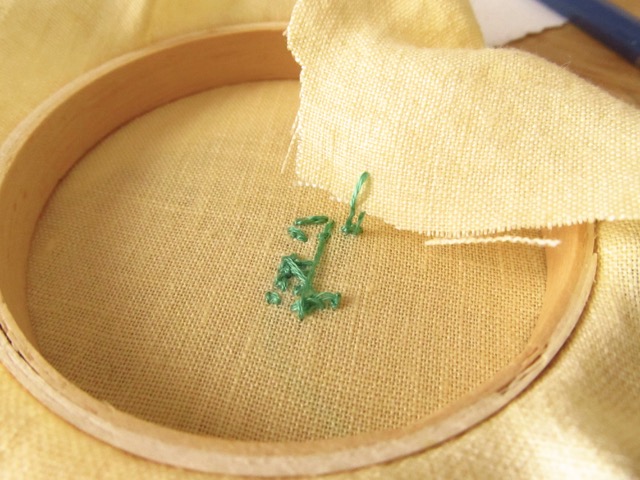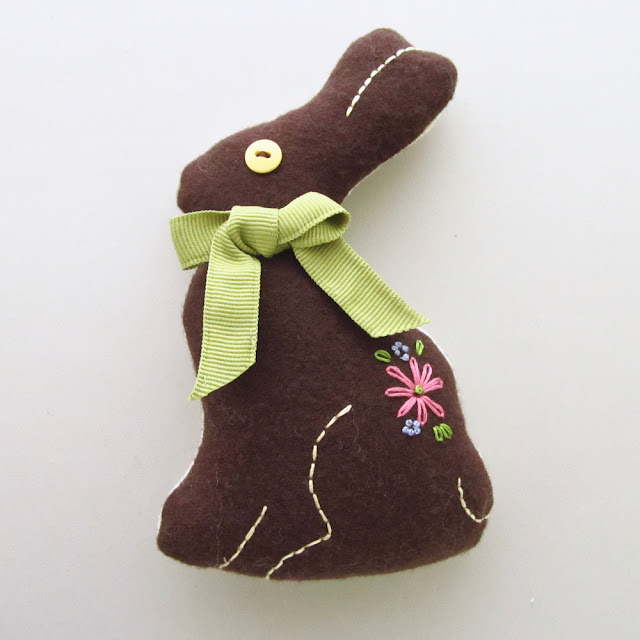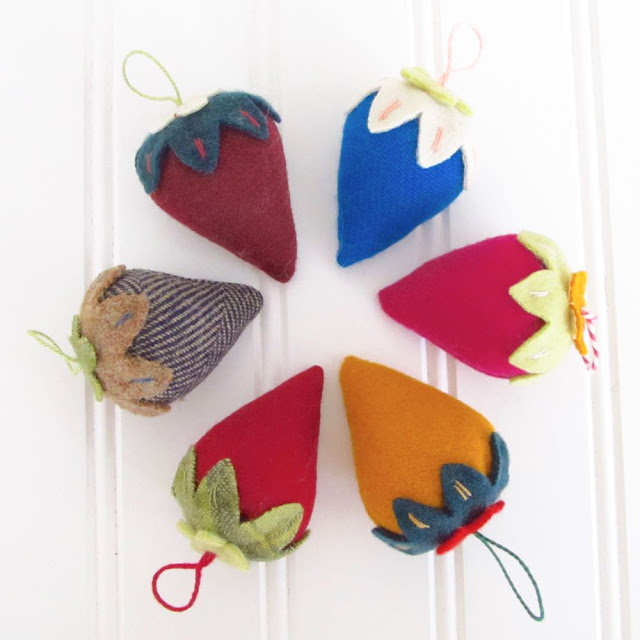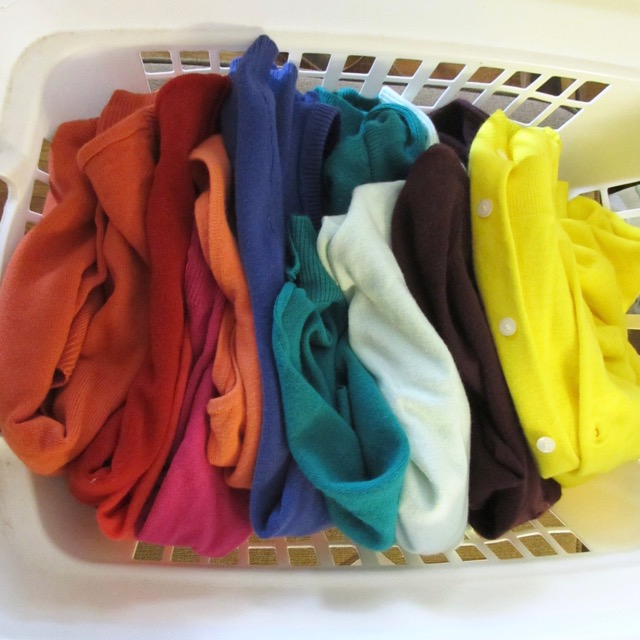Buying second-hand clothing and furniture is pretty common, but most of us don't think to look through garage sales and thrift stores for crafting and sewing supplies.
Yes, we'll head to antique stores and flea markets for those wonderful old wooden spools and vintage linens, but second-hand shopping offers much more than that to the serious maker.
Here's how you can make the most out of shopping second-hand for sewing and crafting supplies (and read to the end for the #1 best craft and sewing supply thrifting advice ever).
Find the shops you love
Locate the thrift stores, flea markets, antique stores in your area and make a list or map. Dedicate a fun day to check them out, or when you're in that neighborhood, just take a ten minute trip inside to see what they have to offer. Once you know which shops you like, keep them on your radar for your thrift shopping jaunts.
Categorize the shops on your list
Some shops have better furniture than clothing and some have better craft supplies sections than others. Know which stores have the best stuff by category. That way, if you're know you're looking mainly for fabric or yarn or picture frames, you know which stores to spend most of your time on.
Learn about the sale days and promotions these shops have
Sign up for emails if the shops send them out. These will tell you when sales are coming up. Ask about special discounts, such as seniors or military discounts. If you’re
big on social media, check out shops’ Facebook pages or Instagram profiles for photos of
special items, often antiques or sale announcements. Some shops have coupons or frequent buyer punch cards to encourage you to come in and they can save you lots on already low prices.
Check the return policy
Most thrift stores don't take returns, but they will take exchanges. Find out if this is only good on clothing or extends to books (don't forget to check out the craft books!) or linens or fabrics.
Keep a running list of supplies you want or need
You've just walked into an amusement park for crafters, so if you don't want to be endlessly distracted and then disappointed when it's time to go, have a list of items you are looking for to keep you focused. Your list might be general (patterns, vintage linens) or it might be very specific (a certain size of knitting needles).
Know how much of the fabric or yarn you
need. If you end up buying way too little and have your heart set on it,
you'll be very disappointed later. Unroll fabric rolls and measure if
measurements aren't provided.
Decide how much time you will spend in each shop and make sure you have time to walk through twice
When you run your errands or have a dedicated thrifting day, wear a watch and set a time limit for each store. Once you become familiar with the shops, head straight to the sections you really want to visit. For example, one of my favorite shops has everything, but while I love to look at the picture frames and rugs, I'm not really in the market for them. So I head directly to the crafts and sewing section, the linens racks, the kitchen utensils (for mixed media pieces) the vintage shelves, and the women's clothing (because I repurpose wool and linen fabrics).
If I'm doing well on time, I visit other sections for fun but often what I've found in one section encourages me to go back to a preciously visited section to look for items that complement my new treasures or to head to those picture frames I didn't look at because I've found the perfect array of items now needing a shadow box.
Take some tools of the trade with you
Tape measure. Tape measure. Tape measure.
Did I mention you should always have a tape measure with you? There's no use bringing along the project measurements if you have no way to measure. If you need to match colors, bring swatches or yarn snippets.
If you are looking for cool embellishments for clothing or small quilts, for example, bring them along so you can coordinate your finds.
Don't forget to check the children's section
A felted, shrunken woman's sweater just begging to be repurposed is often mistaken for children's clothing. Little dresses are often made from the most gorgeous prints and can be used for small projects, toys, patchwork, and sachet drawstring bags.
Infant and doll mittens and socks can be turned into Christmas ornaments. Game pieces can be used as charms in a mixed media fiber art piece. There are a lot of lovely surprises to be found in the children's section.
Remember that craft items are not always in the crafting section
Sometimes patterns can be found with the books or knitting needles or jars of buttons behind the cashier's counter. Fabrics may be hanging up with the linens, but there may be a second location in bins or on shelves. Craft kits or scrapbooking supplies may be in puzzles and games because they are packaged in colorful boxes and misunderstood by staff.
This needlepoint strip was originally backed as a wall hanging. It had a brass hanger at
the top and tassel at the bottom. By removing everything, it became a part of a
repurposed wool sweater sofa throw pillow. The needlepoint was found
in the home decor section of the shop.
Remember that craft items are not always even craft items
It's almost impossible to find certain fabrics in fabric stores. Linen shirts and dresses pop up all over thrift stores and in the most wonderful weights and colors, while most large chain fabric stores sell mainly cotton-linen blends or only a couple of colors of actual linen. Remember to check out the clothing racks for fabrics made of linen, cotton, leather, suede, and wool. You may even find a hemp skirt.
Other sections will offer up fantastic supplies for crafting and especially upcycling. Take a turn in the kitchen section for teacups to fill with candle wax and wicks, silverware for jewelry or chimes. Look through shelves with office supplies and stationery for old photographs or carnival tickets.
Cutting seams from linen shirts for the fabric.
Check for stains, weak spots, holes, and smells
Mold is my enemy. Not only is it next to impossible to get rid of, it smells, and it can trigger an asthma attack. I have found myself walking around the stores wondering why I am starting to wheeze, only to discover I have been carrying around a mold farm disguised as the most beautifully embroidered dresser scarf I have ever seen.
Bye bye, beautiful. It's not worth the trouble of washing you in special chemicals and then hanging you up in the sun or a UV light (the only thing that kills mold). Vinegar and bleach do not kill all types of molds and if you're allergic, you want to avoid it at all costs.
Stains and holes, on the other hand, may pass the "I still want it" test as long as they can be worked around. But you still want to know about them before you buy. In fact, you might even be looking for something a little holey....
Learn to mend
Visible mending and boro are tremendously satisfying and popular. Know the faults in the fabrics and clothing you buy, but keep an open mind about the creative possibilities of adding mends to them for art's sake.
A small hole in my new cashmere sweater wasn't discovered until I got home.
No problem! I have mending skills!
Know you're going to wash everything
That's just good sense, but if you're really loading up, remember, the work doesn't end at the register and you probably don't want a pile of unwashed second-hand goods in the basket forever, so know you'll be taking more time to care for your treasures. And while you can throw most everything into the washing machine, some items, such as this tie-dyed shirt, are best hand washed to avoid bleeding onto other fabrics.
Buy for parts
Thrift shops are a gold mine for Pinterest projects. And not just for individual items such as mason jars or doilies, but for salvaged parts of larger items as well. Imagine a velour track suit. The fabric becomes several soft cuddly toys, the zipper is turned into a Pinterest-inspired flower brooch, and the drawstring cord from the hood is used for all those shoe bags popping up on Pinterest these days. Games can be parted out for not only the board but all the cards and pieces.
which also leads to the next tip:
Search “Thrift store shopping” on Pinterest...
...for articles on thrifting
secrets and tips, lists of thrift stores in major cities, how to shop
for specific categories such as jewelry, vintage clothing, etc.; DIYs
you can make from thrifted items; how to resell items you’ve thrifted.
Don't forget storage
As your collection grows, so will your need for storage. Look for tins, baskets, and plastic tubs to organize your treasures.
Expand your idea of where to thrift
Don't forget to check out yard sales, estate sales or auctions, Freecycle, and church rummage sales. Don't limit yourself to just one brick-and-mortar idea of where you can find crafting treasures.
Taking a second look at some questionable advice
I have seen these advices given online regarding thrift store shopping and have some differing opinions.
1) "Go ahead and haggle" - Don't do it. These stores are already selling you something at a fraction of the cost while trying to help people with their profits and jobs. Haggling and negotiating is insulting to their mission. It's a little like going into a homeless shelter and begging for spare change.
Exception #1: If you love something that has holes or is broken or missing pieces, yes, by all means, ask if they can discount the price. Sorting thrift store stock is grueling and staff has to work through mountains of it daily; many faults in products are missed in the sorting. It doesn't hurt to ask.
Exception #2: If you think the prices are too high,
like, REALLY too high, you could ask to speak to a manager who can do
something about price. Staff isn't always right about price. If they can't lower it and you don't want to pay it, don't get huffy; just don't buy it.
2) "Don't buy thread" - Really this should be: don't buy old thread to use in sewing machines. Most older thread was cotton and cotton degrades over time. This older sewing thread may be stained and will probably not hold up well in sewing machines. The same can be said for very old cotton embroidery floss.
That said, you might find a stash of fairly new spools of sewing thread, or better yet, a specialty thread, such as the entire collection of colors of DMC flower thread I bought a couple of weeks ago. The collection, currently for sale new for $75, only cost me $5. It's unused, in new condition, and in perfect shape. I have never used flower thread before and quickly becoming my all-time favorite thread.
A rainbow of DMC flower thread, more than 100 skeins, for $5.
I have found tons of perfectly good embroidery threads and some completely usable sewing thread in thrift stores. Older thread CAN be used in hand stitchery and not break if you determine it to be in good condition and not too old to be used.
3) "Skip wealthy neighborhoods in favor of small towns" - This is utter nonsense. There is no consistency about second-hand pricing or quality of stock from neighborhood to neighborhood. You can just as easily find over-pricing in small towns as you can in comfortable suburbia.
And because you are looking for sewing and crafting items, consider who has the disposable income to buy better quality supplies. I find more plastic-canvas-type crafting materials in small towns, but suburbia has the linen, silk, and wool fibers I love.
Exception: Some second-hand shops fancy themselves "boutiques" and traditionally charge more but they also carry finer goods. Don't pass them up entirely, though. If it's convenient to visit, just plan to spend less time than usual in the shop (they tend to be small anyway) and just see if you can find any super bargains.
Two crib-sized hand stitched quilt tops found at an expensive boutique op shop in Australia.
I finished them and hung them on my bedroom wall. $6AU/$4US each.
4) "Shop off-season for clothes" - This used to be the best advice ever and a great way to buy clothes for the fabrics they are made from and refashioning, but more and more, thrift stores are following other retailers by packing away the winter wear over summer and vice versa. When you thrift, buy when it's there; there's only one of what you see and if you want it, buy it. I buy sweaters to repurpose in winter because I won't be able to find them in summer. I buy a lot of linen in summer because that's when it gets donated as women change their wardrobes out for new.
Best advice ever!
The best place to shop for sewing supplies, fabrics, sewing and stitchery books, doilies and lace, buttons, embroidery hoops, vintage linens, and more is:
Any charity shop, flea market, or rummage sale that tends to receive donations from older folks or from the families of the recently deceased.
Don't tell me how sad that statement is, I totally get it. But to be honest, I've found the very best quality and unique stitchery supplies at shops that receive estate collections or are part of a nursing home system.
And sometimes when I buy from these shops, I imagine my own grandmothers and great-grandmother and think, wouldn't it be great if these ladies could know I'm not only still using their special button box but treasuring it. Not only am I doing some sewing, I'm passing that skill down to my children.
Of course, thrifting should be fun. Take a friend. Or don't. I can't shop with someone else when I have project goals in mind. It's me time and frankly, it's a big part of my personal creativity work-out time. I respect and honor it, so I allow myself to enjoy it. I hope you do, too.
Happy hunting!








